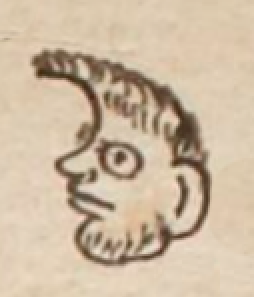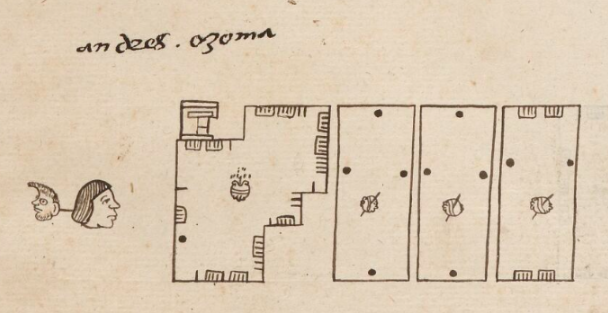Ozoma (Verg8r)
This black-line drawing of the simplex glyph for the personal name Ozoma (“Monkey,” attested here as a man’s name) shows a monkey's head in profile, looking toward the viewer's left. He has the characteristically large, round eyes. He has a beard, and his hair stands up and curls forward.
Stephanie Wood
The glyph for monkey very typically shows the hair (tzontli) on the top of its head standing up, and sometimes the hair is long and thick, and so very noticeable. Perhaps this portrayal of hair is meant to serve as a phonetic complement for the "zom" in the middle of the root ozoma, given that "tzon-" stands for hair.
The ozomatli is a day sign in the calendar, so it was given as a name to babies born on its day. There was also a divine force or deity named Ozomatli, which, according to Desmond Morris (Monkey, 2013, 41), was "the companion spirit and servant of the god Xochipilli, the deity of music and dance. In paintings it is depicted dressed in malinalli herbs and with white, oval earrings with pointed ends."
Stephanie Wood
andres.ozoma
Andrés Ozoma
Stephanie Wood
1539
Jeff Haskett-Wood
monkeys, monos, calendarios, tonalpohualli, días, deidades, deities, divinities, divine forces, ozomatli, nombres de hombres

ozoma(tli), a monkey, https://nahuatl.wired-humanities.org/content/ozomatli
Codex Vergara, folio 8r, https://gallica.bnf.fr/ark:/12148/btv1b84528032/f23.item.zoom
The non-commercial reuse of images from the Bibliothèque nationale de France is free as long as the user is in compliance with the legislation in force and provides the citation: “Source gallica.bnf.fr / Bibliothèque nationale de France” or “Source gallica.bnf.fr / BnF.” We would also appreciate a citation to the Visual Lexicon of Aztec Hieroglyphs, https://aztecglyphs.wired-humanities.org/.









